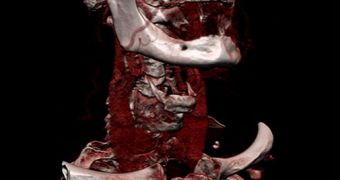Experts from the University of Nottingham now benefit from the most advanced 3D X-ray micro Computed Tomography (CT) scanner in the world, the Nanotom. The instrument will allow them to push back the boundaries of science in a large number of fields in the near future, ranging from engineering to veterinary medicine and architecture. It can peer through solid objects, eliminating the need for them to be cracked open so that scientists can analyze their contents. Previously difficult and laborious studies will become a thing of the past, once the Nanotom is used at full capacity.
“This new kit will completely revolutionize our work in trying to understand the key factors that control some of the many functions that soils perform. The days of considering the soil, or any porous media, simply as a 'black box' are behind us,” UN Division of Agricultural & Environmental Sciences expert Dr. Sacha Mooney says.
“Now we can see into the fragile structures as they exist in the field and hopefully use the microscopic measurement of the complex 3-D structure to enhance and develop models concerning how soils behave. Of course it's not just soils we'll be scanning, I think I am just as excited about the opportunity to look inside newly created environmental building materials, eco-friendly crops developed to improve yield and even chocolate bars for the food industry!” he adds. This is just one field in which the Nanotom could bring forth considerable development, the scientist adds.
CT scans are tremendously powerful tools for medicine, alongside MRI machines. They allow for doctors to look inside patients without the need for intrusive surgery. The scanners are also widely used for the Non-Destructive Testing (NDT) and the Non-Destructive Evaluation (NDE) of solid objects. One instance of this are mummies, which need to be analyzed internally, but are too valuable to be destroyed. The Nanotom has a resolution of 500 nanometers per pixel, which makes it the tool of choice for such delicate investigations.
“As a leading research university internationally, we are proud to be investing in this cutting-edge technology. The new scanner will be a vital resource across many departments and commercial research partners outside the University. It will enable faster, more accurate research into many scientific areas and we have no doubt it will bring real results in crucial projects like global food production,” Professor Bob Webb, the UN Pro-Vice-Chancellor for Research, concludes.

 14 DAY TRIAL //
14 DAY TRIAL //